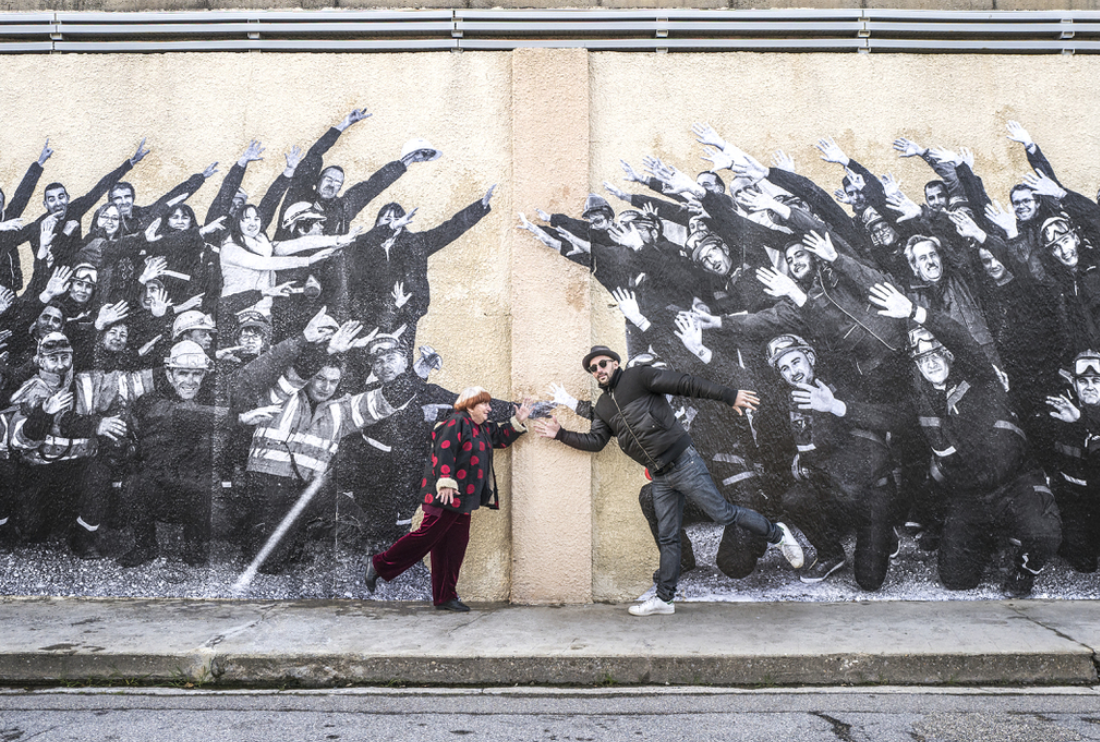The camera as pen, writing a narrative in a literary and therefore sentimentalist way, is nothing new to auteur Agnès Varda. From the moment of her debut, La Pointe Courte (considered a major catalyst for French New Wave cinema), Varda has always exhibited a keen eye for the outsider, the person most wouldn’t necessarily think twice about. But these are the very beings that make Varda’s eyes alight, as you can see for yourself in her latest documentary, Visages Villages, co-created with self-described photograffeur JR.
As the opening scenes describe in a Gondry-esque way how Varda and JR met–or rather, how they didn’t meet–it’s firmly established how we’re able to connect with artists, feeling as though we know them, through their art. And it’s true, there can be no denying the extension of the self through any medium, be it photo-pasting, film or photography. Varda and JR, thus, set out in the van made to look like a camera that JR purchased with grant money he received in 2011 from the TED Prize for his Inside Out Project. It is in their travels to remote or isolated villages throughout France that Varda and JR seek to lend “the common man” an artistic voice as well. Through what Varda calls their own “quirky ideas” displayed for all to see, they hope to not only achieve a realization of their own, but to bring joy to those who come into contact with it. From a lone farmer who plows two thousand acres all by himself to a shy barista who ends up attracting more tourism to the town with the JR image of her holding a parasol, the duo covers all walks of life throughout their country.
A more interactive, community-based update to the selfie culture of now, Varda and JR aim to bring closer together through, for all intents and purposes, self-absorption–but on a hyper-localized level. An abandoned mining town with one defiant old woman left to speak for its legacy is a testament to what can be referred to as “the good kind of self-interest.” For to lose sight of these old images of the miners is to lose a rare piece of history that no one else holds the key to–which is why JR puts the miners up on the walls in tribute of their legacy.
The social consciousness of Varda and JR’s project reaches a new peak when they travel to two separate goat farms, one that de-horns the goats and one that does not. While the owner at the former says it does them no harm and merely keeps them from fighting or goring one another in the pens, the other is vehement about maintaining the natural order. Sure, goats fight, but so do humans, the wise woman assures. It’s the way of things, of nature. Varda and JR seem to be of the same belief as they opt to paste an image of a horned goat near the farm.
Though one would expect that the shtick of their journey would grow tiresome, there’s a bittersweetness to finding oneself at the end of the movie, the result of the last scene dependent on a train ride to see a certain fellow auteur, Jean-Luc Godard (who Varda compares aesthetically to JR throughout the film as he never takes off his sunglasses). The rapport established between Varda and JR is perhaps even more of a commentary on the interconnectedness of humanity than the towns they visit. Their age difference has no bearing on the strength of their friendship. In effect, one sees this becoming a regular travel series on the Discovery Channel, if only Varda and JR would sell out.






















